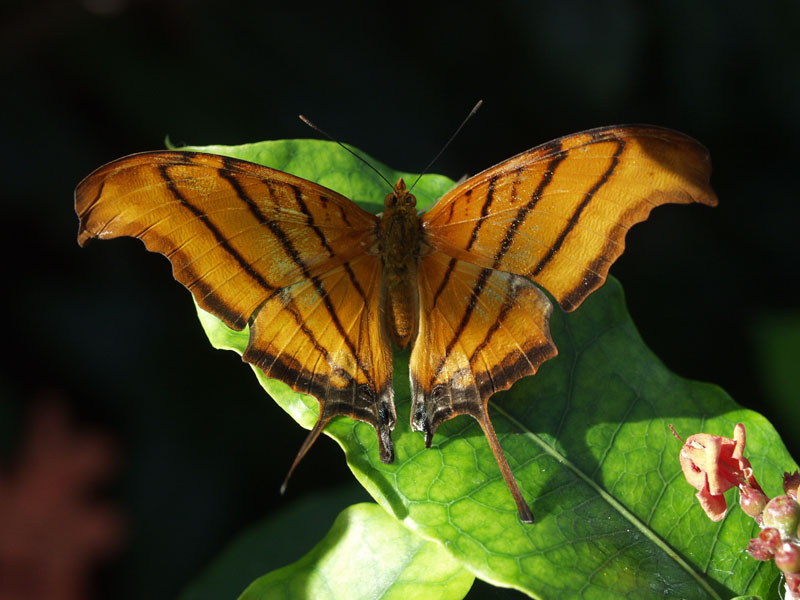

The adults are known to feed from a variety of flowers such as Croton, Lantana and Mikania. Males are often seen around puddles taking up minerals from the soil.
The origin of the genus Marpesia and the species petreus is currently unknown.
Found primarily in tropical and deciduous forest Ruddy Daggerwings often visit clearings in search of nectar plants.
Males and females tend to spend most of their time in the forest canopy unless they are nectaring or puddling. After mating, females lay their pale yellow eggs individually on the host plants. When the larvae are not feeding they can often be found resting on the upper side of the host plant leaves.
There are multiple generations each year which make it possible to find adults year round, with the highest populations found during the warm seasons.
To distract predators the Ruddy Daggerwings have what looks like a false head along the abdomen side of their wings which is formed by the nub at the end of its hind wing and the long sword-like tail. This false head could save the butterfly’s life if a predator strikes that instead of its true head.